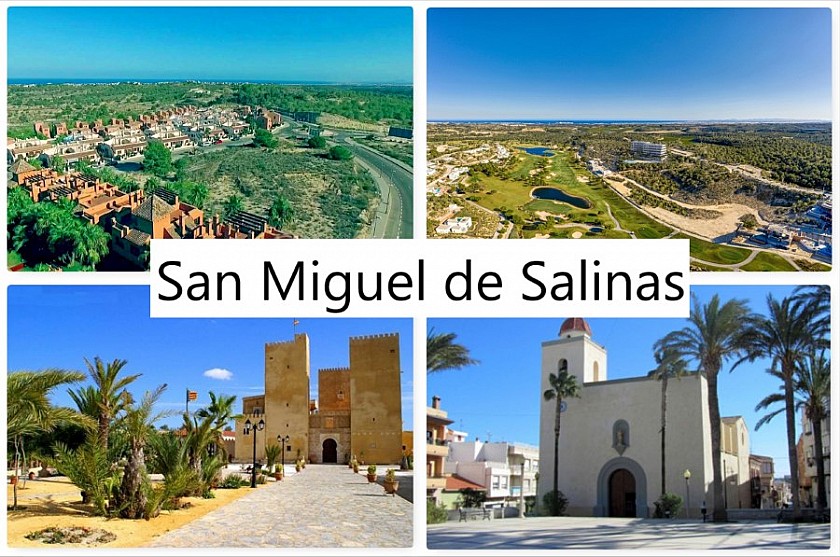

Population:
6.034 (2019)
Flag:
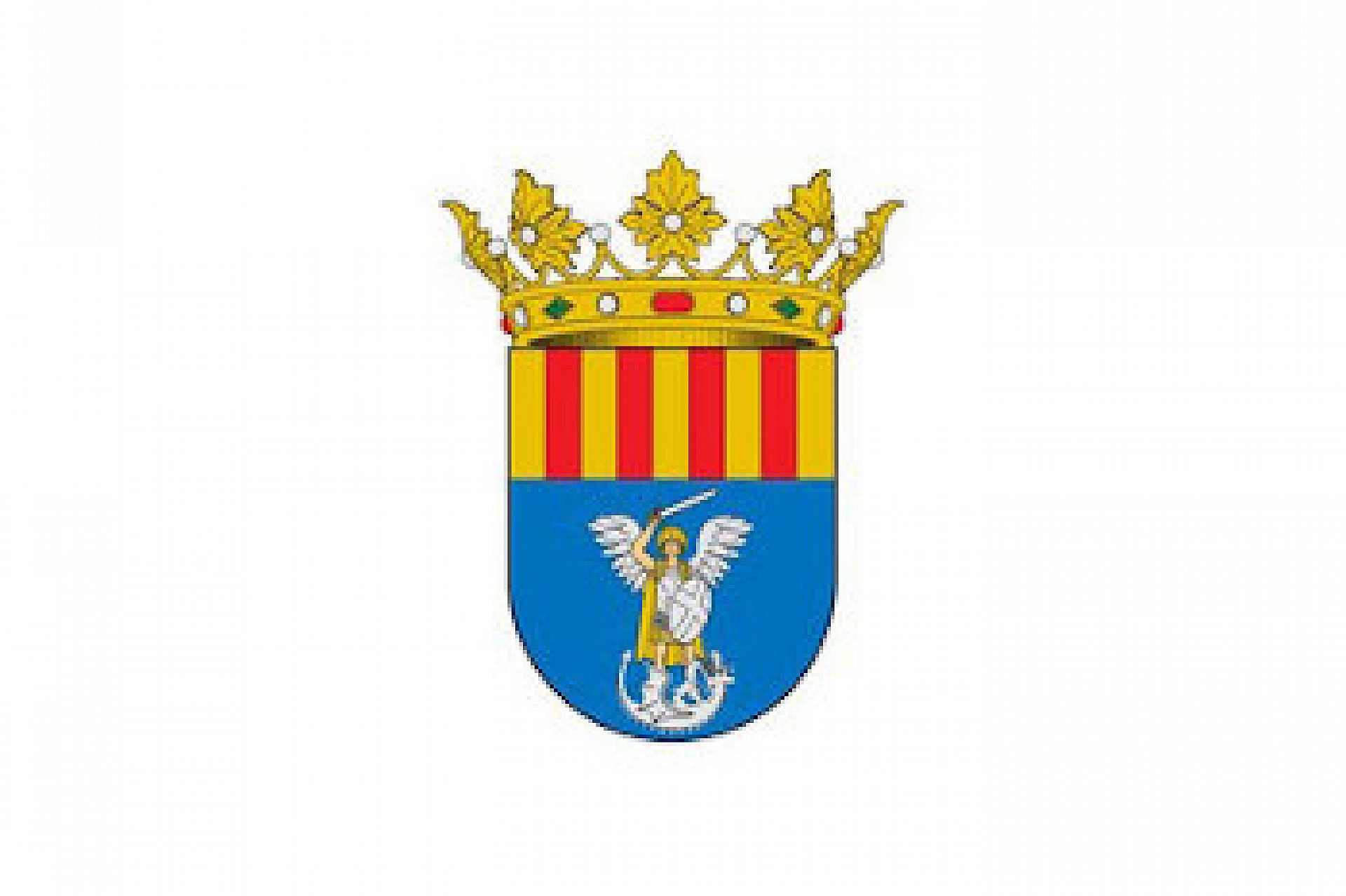
Watch:
Video San Miguel de Salinas
To San Miguel de Salinas belongs:
Location: 7 km from coast
Airport: 61 km (Alicante)
Airport: 57 km (Murcia)
Torrevieja: 9 km
San Miguel in a nutshell:
San Miguel de Salinas is located at a modest 75 meters above sea level. Nevertheless, it is the highest town in a wide area. Several locations in San Miguel offer panoramic views to both the salt lakes of Torrevieja and the beaches of the Mediterranean. But it is not so much the slightly elevated location as the central location that has led many Europeans to buy a house here in recent decades. In the town itself there is little noticeable of this. The relaxed Mediterranean atmosphere makes San Miguel an authentic Spanish town where life usually takes place slowly. Here the original inhabitants are by far in the majority. Most home buyers have mainly found a home in the urbanizations in the suburbs such as El Galan, Blue Lagoon, Blue Hills and Las Filipinas.
San Miguel's central location means it only takes a short drive to get to bustling Torrevieja, the beaches of the Orihuela Costa or any of the area's golf courses. The town has a healthy level of amenities of international restaurants, shops and sports facilities. For a municipality of such limited size, the town has a well-filled festive calendar every year. The most famous is the feast in honor of the patron saint San Miguel, after whom both the town and the church are named. It is best known for the district where dozens of cave houses can still be found. Most of them are now used as shops, artists' workshops and even a restaurant.
Knowledge about San Miguel's earliest history is limited. There are several pieces of the puzzle that map out fragments of the past, but much remains for archaeologists to discover about the early life where the town is now located. We know from the discovery of ancient Roman coins that people probably lived there about 2,000 years ago. Human activities also took place during the period of Moorish oppression from 711 to 1243. This is evident from the ruins of the old tower of Zahurdas southeast of the town. And then there are the finds of pieces of ceramics and pottery that prove that the Cartagenians populated the region.

Ancient manuscripts by historians mention a monastery that must have existed around 800 and another monastery that would have been situated a little later in or near San Miguel. After all, somewhat more concrete than the texts of historians are the archaeological discoveries of the existence of two small communities and a cemetery in the place where the center of San Miguel is now.
Only from 1599 the image becomes much brighter. The first buildings appear when a group of agricultural land owners decide to establish a community. That was the starting signal for the creation of a hamlet, which grew painfully slowly into something bigger. Even centuries later after the community gained independence from Orihuela in 1836, there were no more than eight streets, two squares, and fewer than 1,000 residents.
In more recent history, there were two moments that ultimately gave the population a significant boost. The first was in the late 1970s. San Miguel, until then an almost purely agricultural community, benefited from the construction of a canal network that carried water from wetter regions to San Miguel, among others. Suddenly it became possible to plant more crops and also citrus trees. Activity in San Miguel increased sharply and the population also increased steadily. The second boom came at the turn of the century when foreign home buyers and tourists put the Costa Blanca at the top of their list of most sought after destinations.
San Miguel is surrounded by nature on all sides. This makes it an ideal starting point for people interested in walking or cycling. This is possible, for example, in the Sierra Escalona. This is a nature reserve with a narrow ridge, which stretches from San Miguel through the hinterland of the Orihuela Costa to Pilar de la Horadada on the border with the province of Murcia. The Sierra covers 10,000 hectares and has a rich variety of flora and fauna. Besides a wealth of birds and birds of prey, the Sierra Escalona is also one of the few places in Spain where the genet cat still has a healthy habitat.
Just outside San Miguel, in the direction of Torremendo, is the exit to the Embalsa de la Pedrera. This azure blue reservoir is located in a beautiful rural area and has beautiful views for walkers and cyclists. Slightly further afield, but still strategically ideally located for residents, loom the salt lakes of Torrevieja and La Mata. Nature reveals its beauty there in a completely different way through a wide range of water birds.
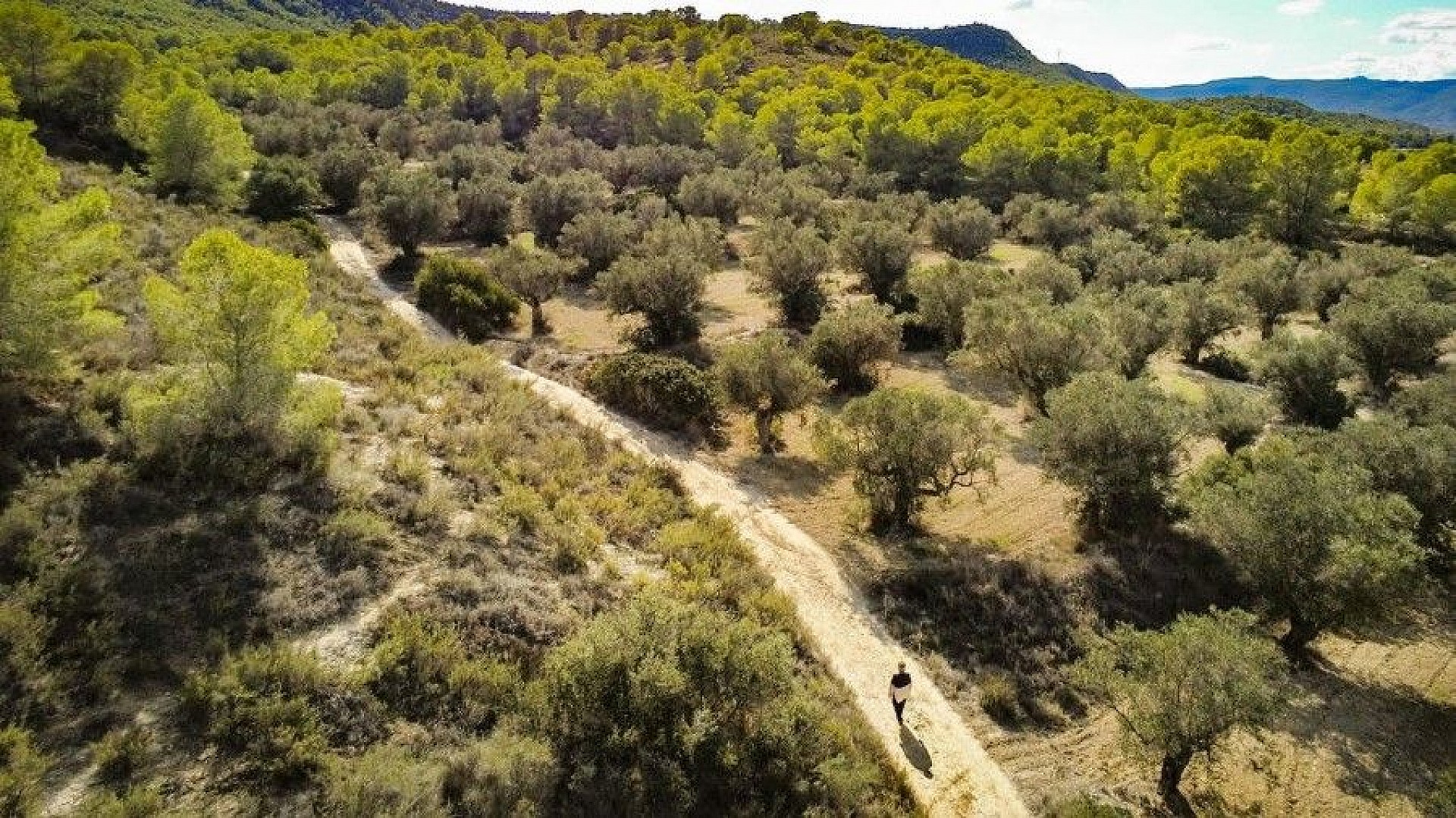
If you really want to stay very close to home to enjoy nature, you only have to take the winding road that connects the town with the urbanisations behind Villamartin. This stretch of a few kilometers goes through an agricultural area where, among other things, the beautiful flowering of the almond trees early in the year attracts visitors.
For completely different activities one can visit the Lo Rufete Multi Aventura Park a few kilometers from San Miguel. Located by the beautiful reservoir, this park offers a range of activities such as: quad bike tours, horseback riding, paintball, volleyball, badminton, archery, kayaking and a large swimming pool. For the adrenaline junkies there is a long zip line to whiz down. For riding lessons one can go to Hipico Gilillo.
San Miguel is also well placed for golf enthusiasts. In the immediate vicinity there is a choice of various interesting courses. For more information about this see our special golf page here.
San Miguel's past is inextricably linked to the many cave houses in the town. To get an idea of the firm stamp these rock-cut dwellings once left on the community, we can go back to 1873. Of the total of 290 buildings in San Miguel, 104 were cave dwellings. The proportions have changed drastically, but the town still has 77 shelters that have been wrested from the rocks. The reason why there were so many cave houses here is twofold. First of all, the geological conditions were ideal to allow such habitation. The presence of hills with layers of soft sandstone eroded away between the harder layers made it relatively easy to hide a 'house' from the rock.
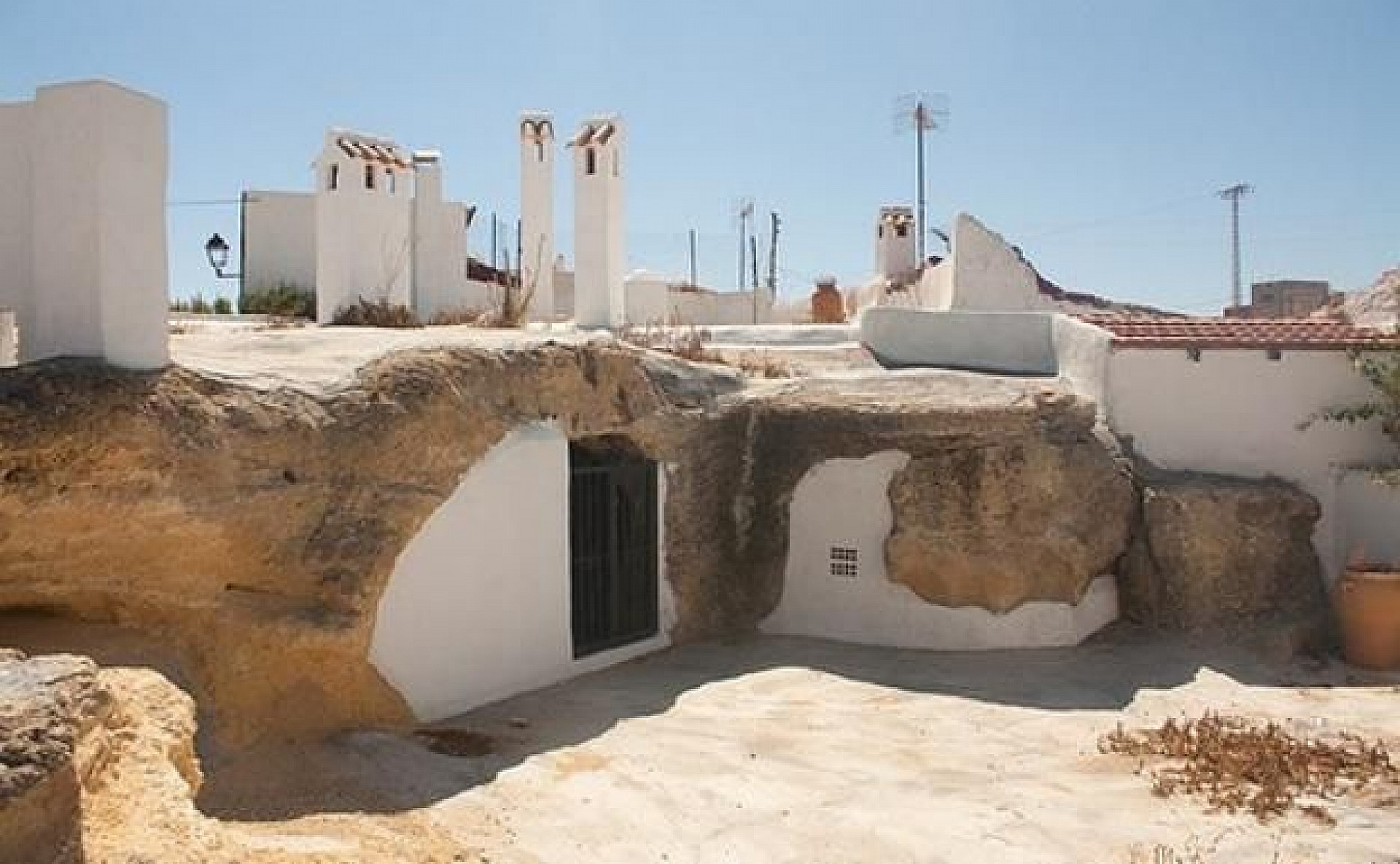
In addition, there was the economic need for extremely cheap housing. Most of San Miguel made a living from agricultural activity, and that work was reserved for the lowest paid. A free home made life that little bit easier. The very simple houses have undergone many extensions and renovations over the years. Little chimneys were gradually added, which are still visible from the rocks. Others built terraces, reinforced cave houses with beams, created water storage systems, tiled their property and installed robust doors.
Although the climatic advantages of rock houses still exist (less warm in summer and less cold in winter), this housing from a distant past is hardly used as such anymore. Most of the rock houses have now been turned into small shops, artists' workshops and even a restaurant. To further promote the area for visitors, the municipality has created a park area around the area.
Celebrations play an important part in San Miguel's life. The most important takes place in late September and revolves around the Archangel Miguel, the patron and namesake of the city. This is celebrated with a series of diverse activities. Very important is the procession during which an image of Miguel is carried through the streets. The Virgin Rosario will be celebrated with a party in October. The Santa Cecilia festival in November is first and foremost a musical event. This gives the local population the opportunity to indulge in their musical traditions.
In addition to these local festivals, the residents also like to immerse themselves in the festivities of the carnival celebration. The Easter week has as an extra special feature a parade of a Roman legion.
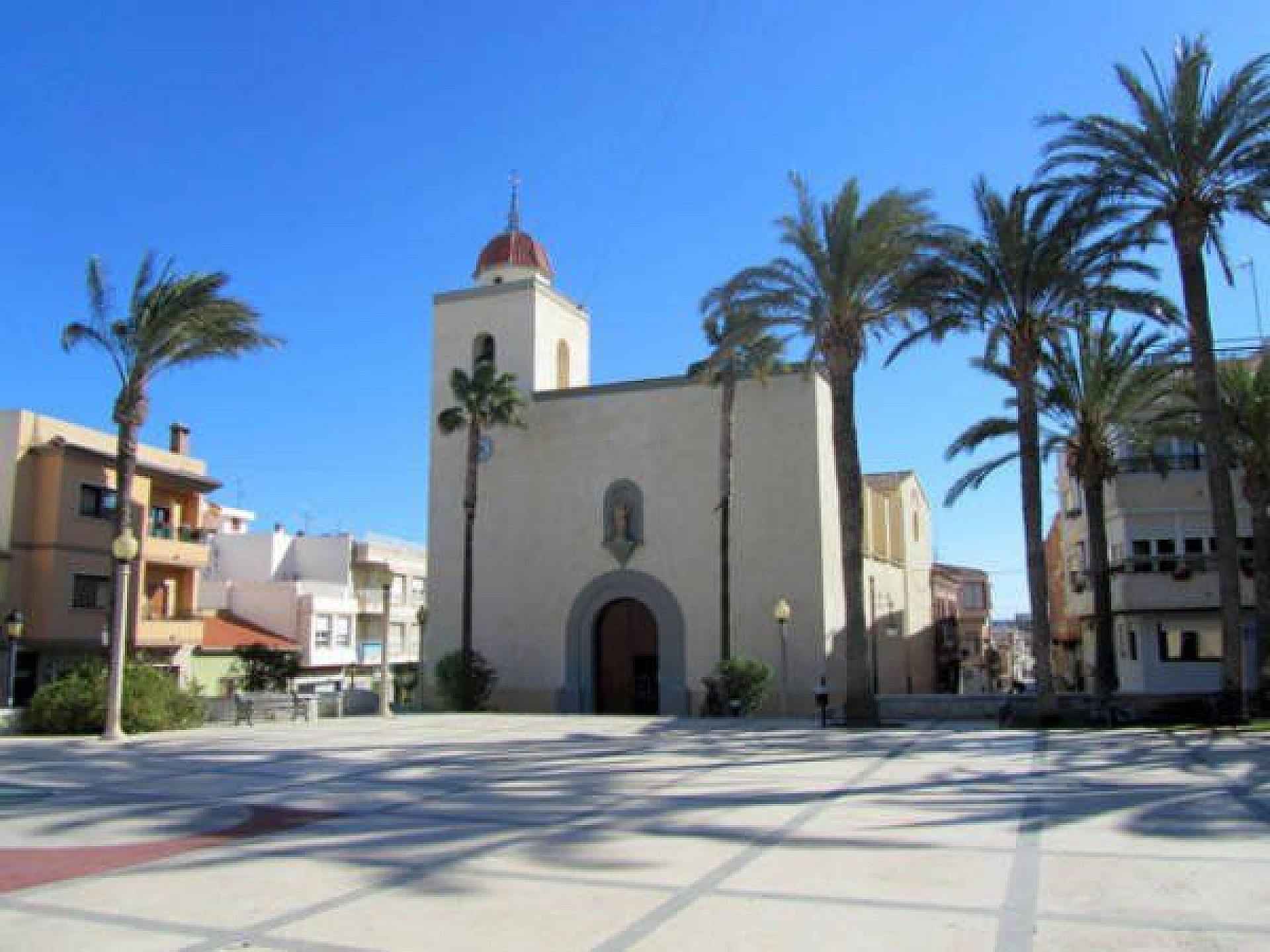
San Miguel has two main places for cultural events. The cultural center (Casa de Cultura) is the place where many performances of music and dance are held. The building also houses an exhibition space and the public library where a modest amount of English-language books can be found. Live performances are preferably held in the summer months in the open-air auditorium on Plaza Jaime I, which has been in use since 2013. Almost all shows in the auditorium are free of charge.
Unlike many other municipalities in the region, San Miguel does not boast many buildings of cultural or historical value. Besides the neighborhood with many cave houses, only the church of San Miguel can claim to be of historical importance. The building dates from 1722 and survived the earthquake of 1829. The church contains several interesting statues, but the main attraction is the bell tower. It can be climbed and offers a beautiful view over the area of the Vega Baja.
For sports enthusiasts, the municipal sports center in the east of the town has a wide range of activities. There is a soccer field, two tennis courts, a swimming pool, paddle tennis courts and a multi-functional field where various ball sports such as basketball and handball can be practiced.